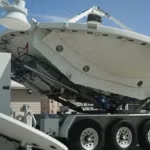
In this monthly column, Defense Daily highlights individuals from across the government, industry and academia whose efforts contribute daily to national defense, from the program managers to the human resource leaders, to the engineers and logistics officers, to defense entrepreneurs. Chandra Marshall is the Vice President of Radar and Sensor Systems in Lockheed Martin’s Rotary and Mission Systems business line, where she oversees all radar-related business operations, as well as site operations in Syracuse, N.Y. She’s been at Lockheed Martin…













